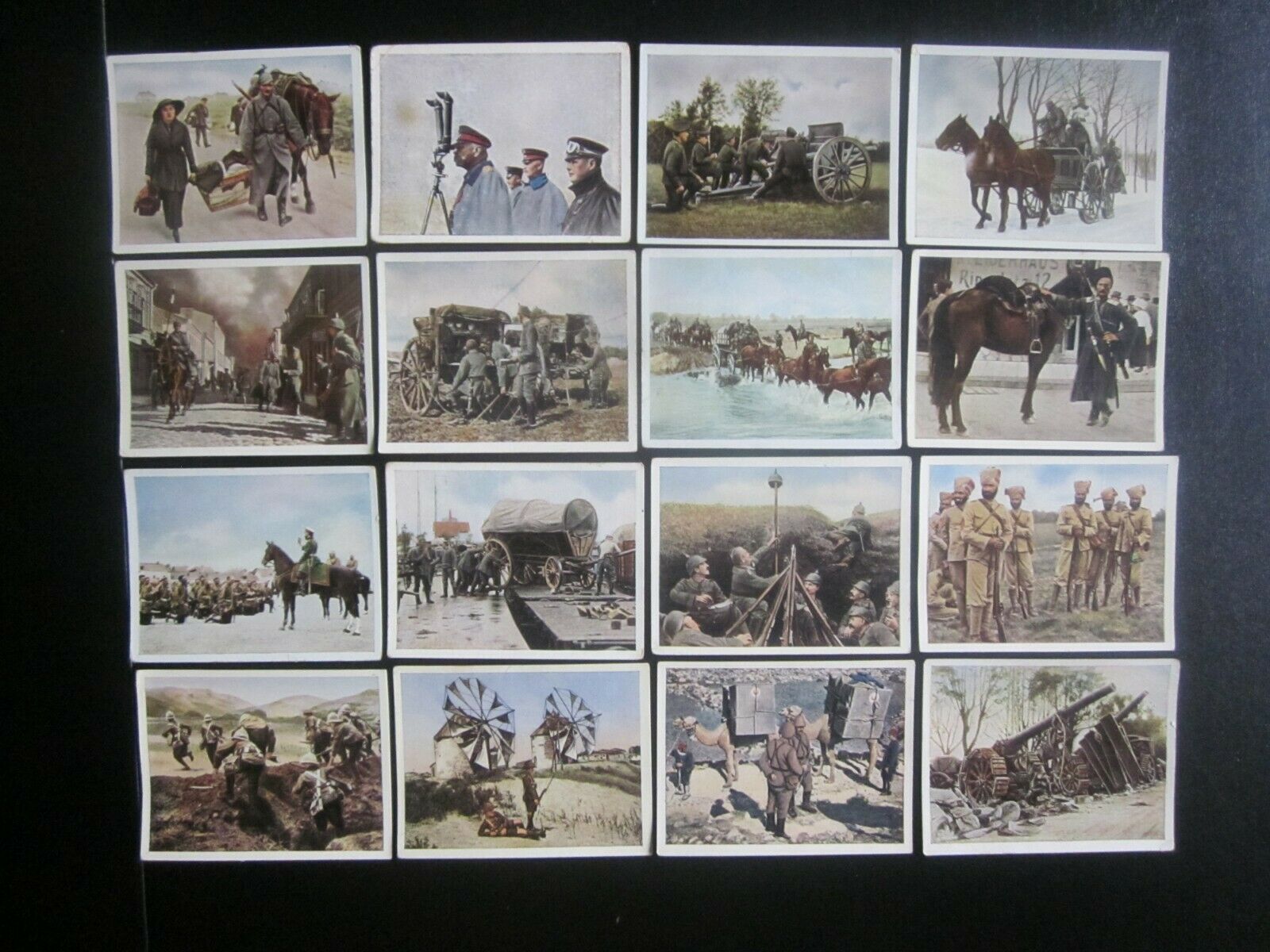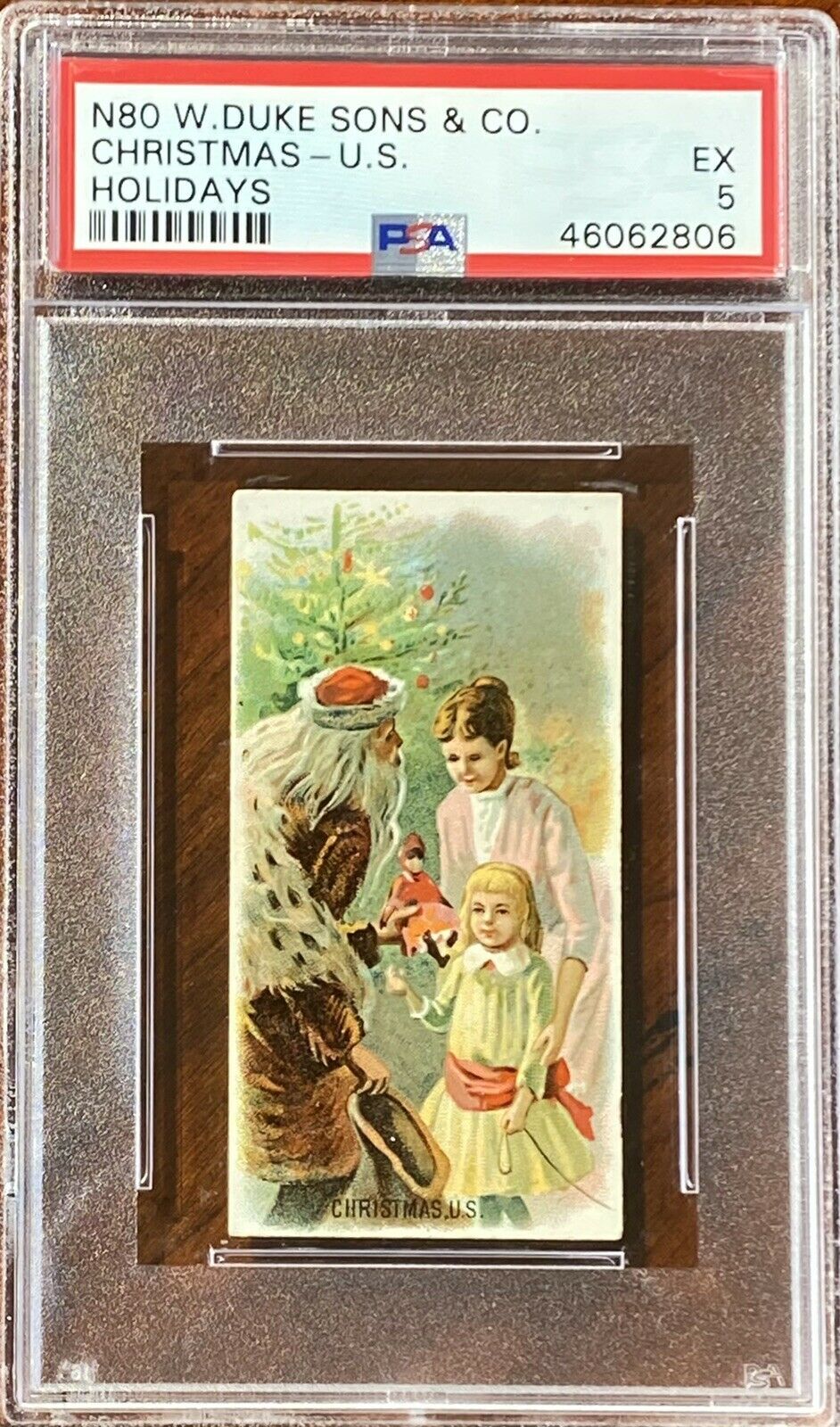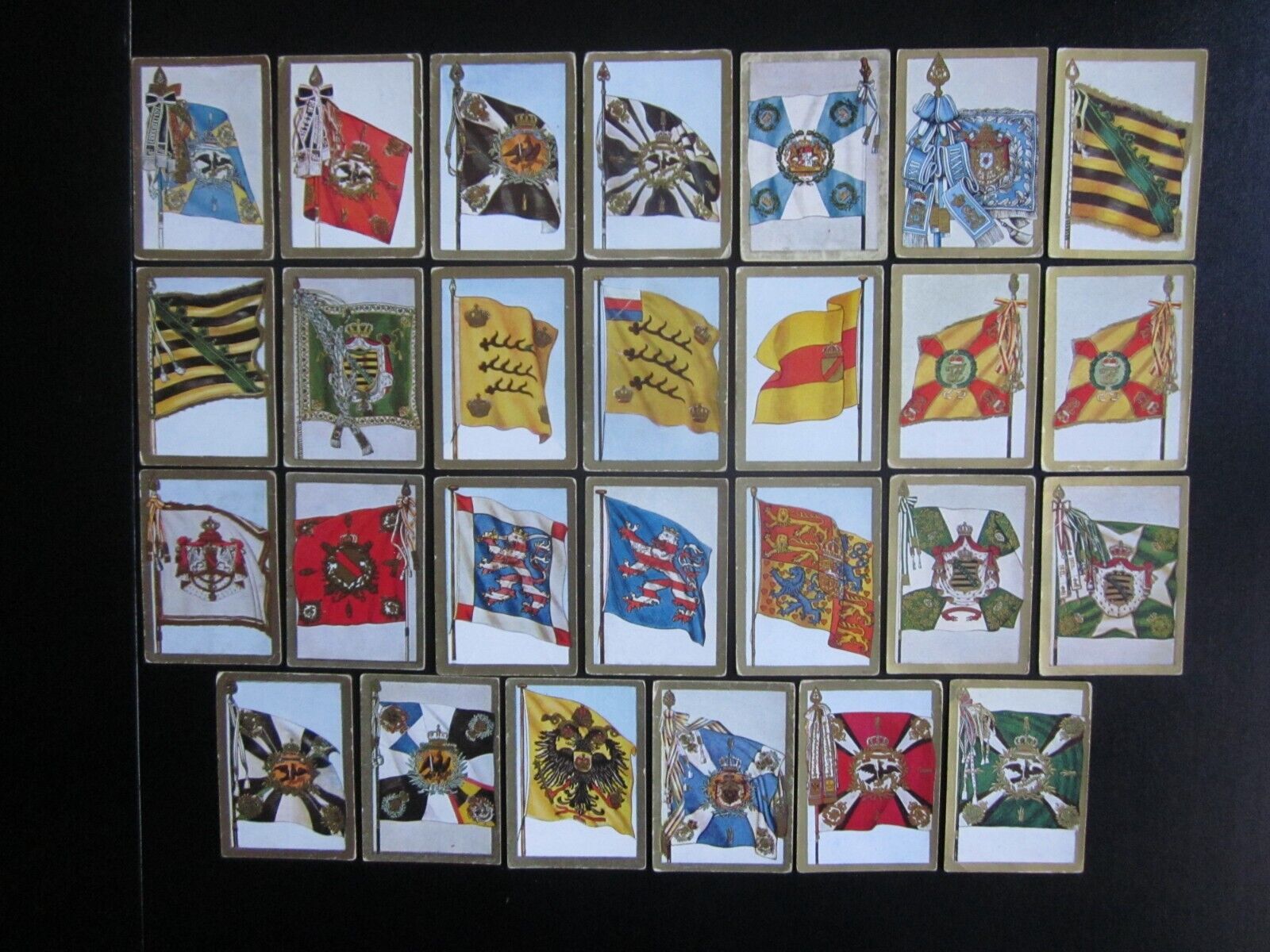-40%
16 color German cigarette cards of World War 1 action, issued in 1937, 1/3
$ 1.58
- Description
- Size Guide
Description
Offered here are 16 original German cigarette cards of World War I action, issued in 1937 by a number of German cigarette companies for the albumDer Weltkrieg
(The World War). Pictured here are:
No. 20:
Civilians Being Led from the Fighting (1914). With the retreat of the Western Powers in August 1914 many civilians went with them, primarily the better-off civilians. Those who remained behind soon realized that there was no reason to flee the advancing German troops.
No. 26:
Hindenburg at the Battle of Tannenberg. On August 23, 1914 Hindenburg and Ludendorff took over command of the Eastern front in East Prussia. Their first objective was to stop Russian General Samsonov's offensive by a quick and mobile "Running Battle". The German army was successful in destroying the Russian army.
No. 29:
Russian Artillery (1914). The Russian artillery had very good guns, but they had a problem keeping the guns supplied with munitions. Captured Russian guns were quickly turned into Flak-cannons by our army, and many of the captured Russian rifles were put to use by the German army.
No. 40:
Sleds for Winter Fighting (1914-15). In February 1915 the German Army came to the aid of its Austrian Allies and attacked the right wing of the Russian front, capturing 110,000 soldiers and 300 cannons. This victory pushed the Russians out of East Prussia for good. But the terrible winter weather meant that most artillery and wagons had to be put on sleds to navigate through the snow.
No. 45:
In order to attract Russian troops away from out main goal around Gorlice and to divide their strength, a strong German corps moved into Lithuania. They were able to achieve their goal and pushed the Russians back to Dubissa and Windau.
No. 46:
A German Field Radio Station. On May 2, 1915 the German army broke through Russian lines at Gorlice-Tarnow and created a salient 60 kilometers long and 5 kilometers deep. The coordination of such a large-scale action relied on field radio stations, as is pictured here.
No. 47:
Marching Through Galicia on the Eastern Front (1915). The German breakthrough at Gorlice-Tarnow forced the Russians to withdraw to the Western Carpathian Mountains. On June 3rd we once again took Przemysl and Lemberg on the 22nd, despite a new Russian offensive. In July the German army turned north and soon drove the Russians out of Poland.
No. 48:
Captured Russians With Their Machine Guns (1915). Just at the Battle of Gorlice-Tarnow alone the Russians lost 100,000 captured, 80 artillery guns and 300 machine guns. The Russians were generally docile as prisoners and so it presented not much of a danger to have them drag their captured machine guns along with them into captivity.
No. 49:
A Russian Cossack Horseman (1915). The Russian Empire had at its disposal an immensely large number of cavalrymen. However, they accomplished less than their commanders had hoped. The only thing that the German cavalry learned from the Russians, and in particular from the Cossacks, was how to destroy everything while retreating. In this, the Russian cavalry went beyond what was militarily necessary.
No. 50:
Czar Nicholas Blesses Departing Russian Troops (1915). In July 1915 the Russian front in Poland became precarious. For the reinforcements going to aid those at the front, a blessing from the Czar was something special, for "Vater Czar" was not only the head of the country, but also of the Russian Orthodox Church.
No. 51:
Unloading Supplies (1915). Our great successes on the Eastern Front in 1914 and 1915 were due in large part to our efficient use of railways through which we could bring troops quickly and often surprisingly to the point of attack or evacuate them quickly, if the front was in danger of collapse.
No. 45:
In order to attract Russian troops away from out main goal around Gorlice and to divide their strength, a strong German corps moved into Lithuania. They were able to achieve their goal and pushed the Russians back to Dubissa and Windau.
No. 46:
A German Field Radio Station. On May 2, 1915 the German army broke through Russian lines at Gorlice-Tarnow and created a salient 60 kilometers long and 5 kilometers deep. The coordination of such a large-scale action relied on field radio stations, as is pictured here.
No. 47:
Marching Through Galicia on the Eastern Front (1915). The German breakthrough at Gorlice-Tarnow forced the Russians to withdraw to the Western Carpathian Mountains. On June 3rd we once again took Przemysl and Lemberg on the 22nd, despite a new Russian offensive. In July the German army turned north and soon drove the Russians out of Poland.
No. 49:
A Russian Cossack Horseman (1915). The Russian Empire had at its disposal an immensely large number of cavalrymen. However, they accomplished less than their commanders had hoped. The only thing that the German cavalry learned from the Russians, and in particular from the Cossacks, was how to destroy everything while retreating. In this, the Russian cavalry went beyond what was militarily necessary.
No. 50:
Czar Nicholas Blesses Departing Russian Troops (1915). In July 1915 the Russian front in Poland became precarious. For the reinforcements going to aid those at the front, a blessing from the Czar was something special, for "Vater Czar" was not only the head of the country, but also of the Russian Orthodox Church.
No. 51:
Unloading Supplies (1915). Our great successes on the Eastern Front in 1914 and 1915 were due in large part to our efficient use of railways through which we could bring troops quickly and often surprisingly to the point of attack or evacuate them quickly, if the front was in danger of collapse.
No. 54:
In the Trenches (1915). Our operations in the East came to a standstill in 1915, since the front line advanced all the way to Riga and Czernowitz and the supply lines were strained to the maximum, leaving soldiers without many amenities. But their good humor helped them through these tough times.
No. 57:
Indian Soldiers in the Service of England (1915). In the fall of 914 England tried to use Indian troops at the battles of Lille and Ypern, but these troops had great difficulty with the climate. From 1915 on they were used exclusively in Africa and in Asia where they proved their courageousness. Our hope that India would rebel against England during the war was not fulfilled.
No. 58:
English Attack on the Dardanelles (1915). In order to neutralize Turkey and to establish direct contact with Russia, England and France attacked Turkey by sea and land along the Dardanelles between March 1915 and January 1916 The Turks, under German leadership, held fast and forced the enemy to withdraw.
No. 59:
A British Guard at Gallipoli (1915). The Western Powers suffered great losses in their attempt by land and by water to capture the Dardenelles. The victory of the Turks and their German advisers was all the greater, since they were short of munitions throughout the fighting. In January 1916 the enemy then completely withdrew from the Gallipoli peninsula.
No. 60:
Turkish Medical Unit (1915). In the dry and unending expanses of Mesopotamia, Syria and Palestine, the camel was the main means of transporting supplies and even of transporting the wounded. The "Red Crescent Moon" on the boxes of the caravan pictured here are the equivalent of the Christian "Red Cross".
No. 57:
Indian Soldiers in the Service of England (1915). In the fall of 914 England tried to use Indian troops at the battles of Lille and Ypern, but these troops had great difficulty with the climate. From 1915 on they were used exclusively in Africa and in Asia where they proved their courageousness. Our hope that India would rebel against England during the war was not fulfilled.
No. 58:
English Attack on the Dardanelles (1915). In order to neutralize Turkey and to establish direct contact with Russia, England and France attacked Turkey by sea and land along the Dardanelles between March 1915 and January 1916 The Turks, under German leadership, held fast and forced the enemy to withdraw.
No. 59:
A British Guard at Gallipoli (1915). The Western Powers suffered great losses in their attempt by land and by water to capture the Dardenelles. The victory of the Turks and their German advisers was all the greater, since they were short of munitions throughout the fighting. In January 1916 the enemy then completely withdrew from the Gallipoli peninsula.
No. 60:
Turkish Medical Unit (1915). In the dry and unending expanses of Mesopotamia, Syria and Palestine, the camel was the main means of transporting supplies and even of transporting the wounded. The "Red Crescent Moon" on the boxes of the caravan pictured here are the equivalent of the Christian "Red Cross".
No. 158:
Captured Materiel From Our Italian Offensive (1917). After breaking through the Isonzo Front at Flitsch and Tolmein on October 24, 1917 the Italians fled over the Piave River. They would have been destroyed had not the English and French come to their aid and prevented our pursuit.
The card measures 2 and 3/8 inches by 1 and 7/8 inches.
With multiple purchases, please wait for the invoice for reduced shipping.










